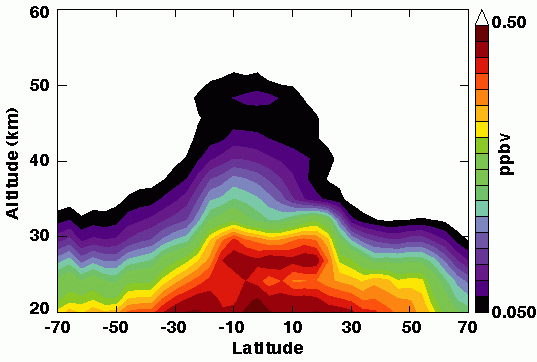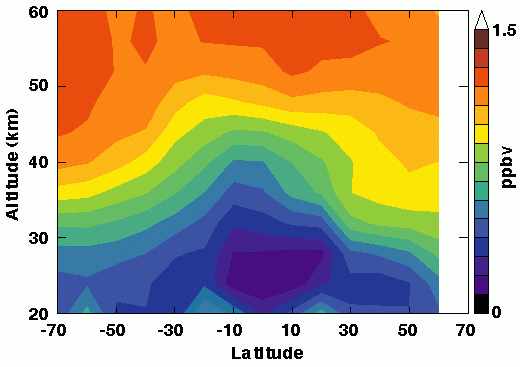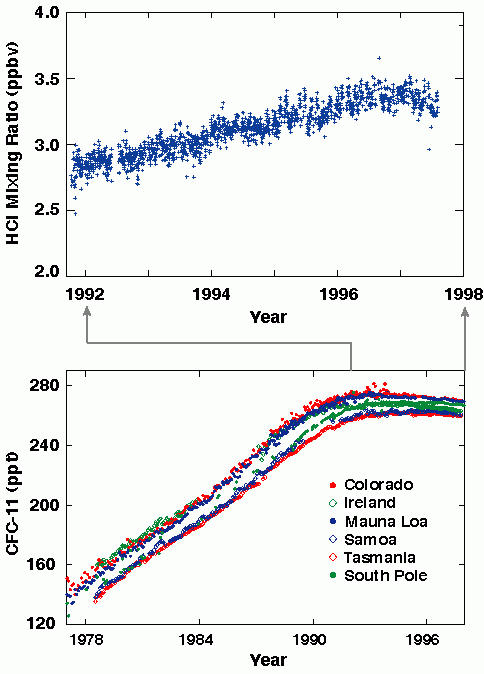
CFC's in the Stratosphere
CLAES made the first global measurements of CFC's (chlorofluorocarbons) in the stratosphere. CFC's enter the stratosphere through upwelling in the tropics. The CFC's decrease with height as they are broken down by UV radiation. CFC's are the major source of stratospheric chlorine. Red indicates large amounts of CFC-12.

CFC By-Products in the Stratosphere
HALOE made the first global measurements of stratospheric hydrogen fluoride (HF). HF is a stable by-product of CFC destruction. HALOE observations of HF confirm the breakdown of CFC's. HF values are high where CFC values are low. Yellow indicates large amounts and purple indicates small amounts of HF.

Growth of CFC By-Products in the Stratosphere
HCI is a by-product of the destruction of CFC's by UV radiation in the stratosphere. HALOE measurements of HCI in the upper stratosphere (50 km) show that HCI amounts increased steadily until mid-1997. The time delay between ground-based changes in CFC trends and the HALOE HCI trends corresponds to the time it takes troposheric gases to reach the upper stratosphere.
CFC Trends in the Troposphere
Ground-level CFC concentrations increased steadily until the late 1980's. After that time, CFC growth rate slowed as international agreements to eliminate CFC production began to take effect.

Last modified: March 08, 2017